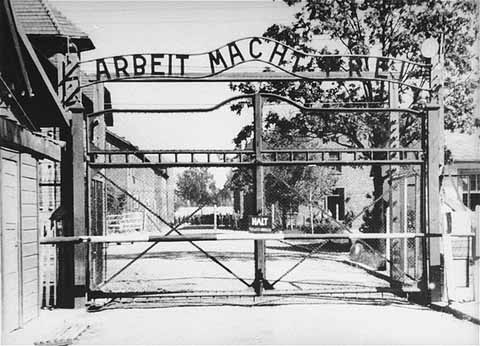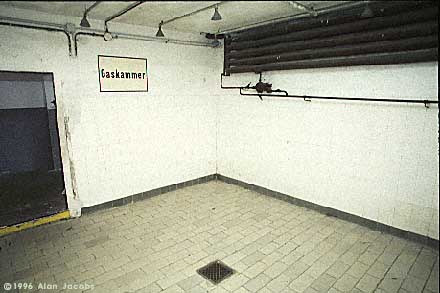
DEPORTATIONS
In the months following the Wannsee Conference,
the Nazi regime continued to carryout their plans for the "Final Solution."
Jews were "deported"--
transported by trains or trucks to six camps, all located in occupied Poland:
Chelmno,Creblinka,Sobibor,
Belzec, Auschwitz- Birkenau, and Majdanek-Lublin.
The Nazis called these six camps "extermination"
camps". Most of the deportees Are immediately murdered in large groups
by poisonous gas. The Nazis changed gassing as their preferred method of
mass murder because they saw it as "cleaner" and more "efficient"
than shooting. Gassing also spared the killers the emotional stress many
mobile killing squad members had felt shooting people face to face. They
were located near major rail road lines, following trains to transport
hundreds of thousands of people to the killing sites.
Many of the victims were deported from nearby
ghettos, some as early as December 1941, even before the Wannsee meeting.
The SS began in earnest to empty the ghettos, however, in the summer of
1942. In two years' time, more than two million Jews were taken out of
the ghettos. By the summer of 1944, few ghettos remained in eastern Europe.
At the same time ghettos ere being emptied , masses
of Jews and Roma (Gypsies) were transported from the many distant countries
occupied or controlled by Germany,
including France, Belgium, the Netherlands,
Norway, Hungary, Romania, Italy, North Africa, and Greece.
The deportations required the help of many people
and all branches of the Germans government. The victims in Poland were
already imprisoned in ghettos and totally under German control. The deportation
of Jews from other parts of Europe , however, was a far more complex problem.
The German Foreign Ministry succeeded in pressuring most governments of
occupied and allied nations to assist the Germans in the deportation of
Jews living in their countries. |
 Auschwitz
was the largest camp established by the Germans. It was a complex of camps,
including a concentration ,extermination and forced labor camp. It was
located near Crakow (Krakow),
Poland.
There were three large camps constituted at the Auschwitz camp complex:
Auschwitz1&2
which were located at (Birkenau),
and Auschwitz 3 that
is located in Monowitz. More than one million people lost there lives at
Auschwitz. 9 at of 10 people were Jewish. They had four large gas chambers
that could hold more than 2,000 people at one time.
Auschwitz
was the largest camp established by the Germans. It was a complex of camps,
including a concentration ,extermination and forced labor camp. It was
located near Crakow (Krakow),
Poland.
There were three large camps constituted at the Auschwitz camp complex:
Auschwitz1&2
which were located at (Birkenau),
and Auschwitz 3 that
is located in Monowitz. More than one million people lost there lives at
Auschwitz. 9 at of 10 people were Jewish. They had four large gas chambers
that could hold more than 2,000 people at one time.

